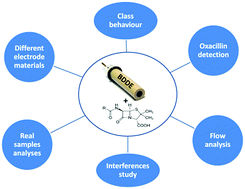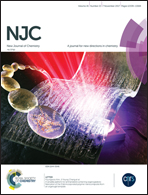Electrochemical behaviour of several penicillins at high potential
Abstract
Electrochemical oxidation at high potential, using a bare boron-doped diamond electrode as the working electrode was evaluated for five penicillins: oxacillin, penicillin V, penicillin G, ampicillin and amoxicillin. Even though the electrochemical oxidation is expected to occur at the common penicillin core, the five molecules exhibited different electrochemical behaviour, even after alkaline or acid hydrolysis. Based on anodic oxidation at high potential, a simple electrochemical method was developed for the detection of oxacillin by differential pulse voltammetry. Different electrode materials and electrode modifications were tested, with the best results being obtained with the unmodified boron-doped diamond electrode. The developed method allows a selective detection of oxacillin, with low influence from common interferents and is sensitive enough to be successfully applied to oxacillin detection from pharmaceutical, biomedical and environmental samples. The anodic oxidation of penicillins was successfully adapted for flow injection analyses, with sensitive and reproducible successive analyses of oxacillin, at different concentrations.



 Please wait while we load your content...
Please wait while we load your content...